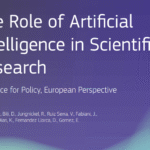In a world saturated with information and competition, capturing your audience’s attention is a monumental challenge. How can you stand out? The answer is older than writing itself: by telling a good story. Storytelling has established itself as one of the most powerful tools for any business, transforming the way brands communicate, connect, and persuade.
Stories are the very fabric of human culture. From cave paintings to the latest Netflix series, they have been the vehicle for transmitting knowledge, values, and emotions. In the business world, this ancient art enables us to forge genuine emotional connections with clients and collaborators, transforming a brand into an entity one can engage with and trust.
In this article, we will guide you through the universe of storytelling. We’ll explore its definition, strategic importance, key elements, and how you can implement it effectively. Additionally, we’ll address future trends, ethical considerations, and provide you with inspiring examples to help you start telling your brand’s story.
Key takeaways
- Storytelling is strategic, not just creative: It’s not about embellishment but about communicating a key message in a way that connects, persuades, and is remembered.
- Emotion is the currency of storytelling: Your audience’s decisions are emotional. Appeal to their feelings, fears, and aspirations to build a genuine bridge with them.
- It goes beyond marketing: Apply storytelling in human resources, leadership, and internal communication to build a strong and unified organizational culture.
- Authenticity is non-negotiable: In a skeptical world, your story must be credible and transparent. Trust, once lost, is nearly impossible to regain.
What exactly is storytelling? More than just telling a tale
Storytelling is often confused with simply sharing an anecdote. However, its scope is much deeper. It is the strategic art of designing and conveying a message through a well-structured story, to create an emotional and memorable connection with the audience.
It’s not just about what you tell (the narrative), but how you tell it. Persuasion, as Fryer noted in 2003, is the centerpiece of commercial activity. Storytelling is the most effective way to persuade—not through cold data, but through empathy and identification.
- Narrative vs. Storytelling: Think of the narrative as the skeleton (the facts, characters, plot). This tool is the complete body: it adds the skin, muscles, and, most importantly, the soul. It is the act of bringing that narrative to life to captivate and move people to action. For example, a narrative would be, “Our company makes shoes from recycled materials.” An effective storytelling approach would be: “Juan, an artisan from our community, wakes up every day to transform plastic bottles that once polluted the river into the shoes that now let you walk toward your dreams, leaving a positive footprint on the planet.”
Storytelling techniques
Before describing some techniques, it’s important to highlight that Lugmayr (2018) describes storytelling as having four essential components:
- Perspective: Every story “has a perspective to convey,” so an author transmits a subjective view on a certain aspect of the story.
- Narrative: This is the actual content of the story, created based on story objects and narrative components. It covers features such as mimesis/diegesis, time/space, cause/effect, and sequence/plot.
- Interactividad: With the development of digital media, interaction became essential in the world of storytelling. It includes story features such as engagement, human-computer interaction, and narrative flow modification/decision.
- Medium: Where other aspects of storytelling focus on the actual story, this function addresses the technology and medium for storytelling. It includes features like medium, mediation, technology, channel, digital content, and forms.
The key elements of impactful storytelling
Every memorable story shares a structure and components that resonate with our psychology. To build an effective narrative, Neely (2014) and Barlett (2022) describe different elements that can be summarized as:
- Message: What is the central idea or moral you want to convey? It must be clear, concise, and the common thread throughout your story.
- Character (The Hero): Your audience needs someone to identify with. This character, who is often the customer, faces a challenge and undertakes a journey. They must be authentic and have clear motivations.
- Conflict (The challenge): Without conflict, there is no story. It is the obstacle the character must overcome. This challenge creates tension and keeps the audience hooked, awaiting the resolution.
- Plot (The journey): This is the sequence of events: the setup (introducing the character and their world), the confrontation (the escalation of the conflict), and the resolution. A well-constructed plot guides the audience logically and emotionally.
- Emotion: Human decisions, including purchasing ones, are fundamentally emotional. Your story must evoke feelings: joy, surprise, empathy, hope.
- Resolution: The ending must be satisfying. The hero overcomes the conflict, learns a lesson, or achieves a transformation. In marketing, your product or service is often the “magic weapon” that helps the hero reach that resolution.
Tips to enhance your storytelling
Mastering narrative techniques is the first step. Below, we offer practical advice for building a storytelling strategy that truly impacts and connects with your customers.
Build a story
A good story is composed of three fundamental elements: characters, conflict, and resolution.
- Characters: These are the protagonists of your tale. They don’t have to be real people; they can be archetypes, the brand itself, or even the customer, with whom the audience can identify.
- Conflict: This is the challenge or problem the characters must face. It is the engine that generates tension and maintains the audience’s interest.
- Resolution: This shows how the conflict is overcome. It’s not necessarily about a victory but the final outcome that offers a conclusion and, often, a moral or a lesson learned.
Create an emotional connection
A story is a powerful tool not only for sharing information but for forging a genuine connection with your audience. Your narrative should have an “emotional hook”: a phrase or idea that captures the reader’s attention from the start and sparks their curiosity about your brand. The goal is not just to make them laugh or cry but to provoke an authentic emotion that resonates with the public. You can integrate storytelling into your business strategy by telling your company’s origin story, its reason for being, and what makes it unique.
Know your audience
Before you start narrating, it’s crucial to know who you’re addressing. This means understanding what kind of stories they prefer, their interests, and, fundamentally, through which channels they consume them (text, video, audio). In this regard, Tsai (2020) reported that, among university students, the length of a video influences brand perception and purchase intention. The researcher found that longer videos can have a more positive impact. If your goal is to sell, you need to understand what motivates your potential customers. If you aim to educate, you must know what inspires them.
Involve your customers
Stories resonate with people naturally. When listening to a good story, the audience feels more connected to the narrator and their message, which builds a fundamental bridge of trust between both parties.
Be clear about the problem you’re solving
Once you understand your audience, the next step is to make your story compelling. To do this, focus on the problem your product or service solves. Ask yourself: What does my customer really care about? Why should they choose us over the competition? The answer to these questions is the heart of your story.
The power of storytelling in business: Why is it crucial?
Integrating storytelling into your business strategy goes beyond a simple marketing tactic. It’s a communication philosophy that generates tangible and lasting benefits.
- Emotional connection: Stories activate areas of the brain related to empathy. When a customer connects emotionally, they cease to be a number and become a loyal follower. Júnior et al. (2023) reported that storytelling stimulates consumer identification with the brand, allows consumers to experience emotional value, and supports engagement behaviors; however, it has a downside: it also propagates harmful narratives.
- Brand memorability: Data is forgotten, stories are remembered. A study by Stanford University’s Jennifer Aaker showed that stories are up to 22 times more memorable than facts alone.
- Differentiation: In competitive markets, your story is your unique value proposition. Companies like Apple don’t just sell technology; they sell a story of innovation, creativity, and challenging the status quo.
- Simplifies the complex: Storytelling allows you to translate abstract concepts or complex data into understandable and digestible narratives for any audience.
- Generates trust and authenticity: An honest story about your company’s origins, your failures, or your values humanizes your brand and builds a solid foundation of trust.
Storytelling for marketing
In marketing, storytelling is a strategic technique that seeks to connect emotionally with the audience through a narrative message. Its goal is to persuade potential customers and strengthen the loyalty of current ones toward the brand.
Stories have been widely applied in traditional marketing to awaken consumer empathy for characters and plots. By generating this affective connection, the aim is to positively influence public attitudes to achieve business objectives (Pan and Chen, 2019).
Today, the narration has solidified its place as a pillar of modern marketing. Key objectives like lead generation (conversion) or social media success lose effectiveness without a compelling narrative to support them (Pulizzi, 2012). For customers to establish a personal and lasting connection with a brand, its stories must be authentic, creative, and inspiring.
According to Zainurossalamia et al. (2021), marketing in the digital era shows that consumers no longer just buy products; they also expect brands to offer memorable experiences and emotions during the consumption process.
From an organizational perspective, the relevance of storytelling is such that methodologies for its analysis have been developed. Chautard and Collin (2019) present one such methodology, highlighting its importance for market research and business strategy.
Practical applications of storytelling beyond marketing
While its use in marketing is the most well-known, the power of storytelling extends to all areas of an organization. Kemp et al. (2023) conclude that the narration is an underutilized strategic tool with the potential to generate a positive impact throughout the entire organization. Meanwhile, Dessart and Standaert (2023) provide general recommendations for managers to consider when crafting sustainability narratives.
Below are some examples of the use of storytelling in the organization, tourism, and science communication:
Storytelling in human resources (Employer branding)
- Talent attraction: Instead of a generic job description, tell the story of a day in the life of an employee. Narrate how a challenging project led to unexpected professional growth. Companies like Google feature the stories of their “Googlers” to attract top talent.
- Corporate culture: Use stories to convey the company’s values. Instead of saying “we value innovation,” tell the story of how a team failed, learned, and ultimately succeeded thanks to a disruptive idea.
- Onboarding: Welcome new employees by telling them the company’s founding story, the key moments in its evolution, and the anecdotes that define its culture.
Storytelling for internal communication and leadership
Leaders who use storytelling are more effective. They can inspire their teams, communicate a new strategic vision, or manage change by telling stories that illustrate the “why” behind decisions, generating commitment instead of resistance.
Storytelling in conflict resolution
In a dispute, each party has its own “story.” A mediator or leader can help the parties build a new, shared story that focuses on solutions and common goals, rather than past grievances.
Storytelling for tourism
In an increasingly competitive tourism market, storytelling has become a fundamental tool for enhancing a destination’s reputation and appeal. Its ability to connect emotionally with the audience makes it a strategic pillar.
A study by Bassano et al. (2019) confirms that a well-constructed narrative functions as strategic communication that creates a competitive advantage. The authors even propose a model for governments to optimize their marketing and communication strategies through stories.
The impact of storytelling is especially notable in niches like ecotourism. Research by Pan and Chen (2019) shows that brand narratives have direct and positive effects on the destination’s image, perceived quality, and ecotourists’ purchase intentions. Therefore, their recommendation is clear: companies in the sector must integrate storytelling as an essential part of their marketing.
From a strategic perspective, Zhang and Ramayah (2024) define storytelling as the art of creating and telling unique, compelling, and emotionally resonant stories. The ultimate goal is to project an attractive destination image and, above all, to awaken in tourists the desire to visit.
Storytelling for education and science communication
The art of storytelling is one of humanity’s oldest teaching tools (Landrum et al., 2019). Its power lies in its ability to transform complex concepts into understandable and personal ideas, achieving deeper and more meaningful learning (Suzuki et al., 2018).
Applications in the classroom and beyond
Today, storytelling is successfully applied in various educational fields. Its versatility allows it to be used for teaching everything from languages to mathematics and is key to disseminating science to the general public.
- In mathematics, Irmayanti et al. (2025) showed that it is an effective tool for motivating students, making the subject more accessible and enjoyable.
- In language learning, a study by Zuhriyah (2017) confirmed that storytelling significantly improves the oral skills of English students.
The science behind stories
The effectiveness of storytelling is not a coincidence; it has a neurological basis. Scientists like the group of Suzuki et al. (2018) have begun to identify the specific brain networks that are activated both when telling and listening to a story, explaining why we connect so deeply with narratives.
Communicating research with impact
Its utility extends to the academic sphere. Wang (2025) offers guidelines for researchers to use storytelling to communicate their findings, transforming data into captivating narratives that demonstrate the impact and relevance of their work.
Online storytelling
Digital or online storytelling is the art of creating and sharing narratives using multimedia platforms and tools. More than just text, it combines video, images, audio, and interactive elements to tell impactful stories that can be easily distributed across the web.
Key applications of digital storytelling
- In digital marketing: Social media is the perfect stage for storytelling. Marketers use it to build brand narratives that connect with the audience at a low cost and with massive reach (Zainurossalamia et al., 2021).
- In education: Digital storytelling has become a transformative tool. According to Robin and McNeil (2022), its use enhances learning for both educators and students, facilitating comprehension and engagement with topics.
- In Data Visualization (Data Storytelling): It’s no longer enough to show graphs; it’s necessary to build a narrative that gives them meaning. Tong et al. (2018) point to the growing need to integrate complex visualizations within a coherent story to communicate information effectively.
Tools to start creating your stories
Here are some online tools that can help you tell stories:
- Canva: A visual content and storytelling tool that makes it easy for anyone to create designs and animations. You can use Canva to create graphics, infographics, social media posts, and more.
- Visme: Visual storytelling can be done quickly with Visme. You don’t need to be a professional designer to create content that wows your customers.
- ACMI Generator: A creative space where you can explore moving images, get inspired, create your own works, and share them with the Generator community.
- Skyword: Focuses on content and how to make it better and more visible. This platform provides access to a community of thousands of freelance writers and videographers.
- Ceros: An interactive content platform that makes it easy to create infographics, e-books, and web pages without needing to know how to code.
Future trends and the evolution of storytelling
The art of storytelling is constantly evolving, driven by technology and new consumer habits.
- Artificial Intelligence (AI) and personalization: AI already allows for the personalization of stories on a large scale, adapting the message to user data and behavior. However, Beguš (2024) notes that while AI narratives can sometimes generate innovative plot twists, they often offer less imaginative scenarios than human-authored texts. Meanwhile, Haotian et al. (2024) investigated existing tools and the roles of humans and AI at each stage of the storytelling workflow.
- Virtual Reality (VR) and Augmented Reality (AR): These immersive technologies take storytelling to another level. Instead of just telling a story, they allow the audience to live it.
- Transmedia Storytelling: The story no longer lives on a single channel. It unfolds across multiple platforms (social media, videos, podcasts, events), where each piece of the puzzle enriches the narrative universe.
- Ethical Considerations: With great power comes great responsibility. Using data to personalize stories borders on privacy limits that must be handled with transparency. Authenticity is non-negotiable; using deepfakes or manipulating narratives to deceive the audience can irreparably destroy trust.
Conclusions
Storytelling has become an indispensable tool in corporate marketing. Through stories, companies can persuade customers to purchase their products or services, but more importantly, they can build a strong brand identity.
By now, you have a solid idea of what storytelling is, and we have shared techniques and tips from experts to help you narrate your stories. The examples provided should give you a broad overview of this tool’s application. Today, a variety of online tools are available for storytelling, and they don’t require you to be an expert in design or programming—just a healthy dose of creativity.
Frequently Asked Questions (FAQ) about storytelling
What’s the difference between storytelling and branding?
Branding is the strategic management of your brand’s identity (logo, values, voice). Storytelling is one of the most powerful tools to communicate and bring that branding to life by telling the story behind the brand.
Do I need a big budget for storytelling?
No. An authentic, well-told story in a blog post or on social media can be more effective than a costly video production. The key is authenticity and connection, not production value.
How can I measure the success of my storytelling strategy?
While measuring emotional connection is difficult, you can use concrete metrics:
- Marketing: Engagement (comments, shares), time on page, conversion rates.
- Human Resources: Quality of applicants, employee retention rate, results from workplace climate surveys.
Does every company have a story to tell?
Absolutely. You don’t need to have started in a garage. Your story can be the passion for solving a customer’s problem, your team’s commitment, or the impact you have on your community. You just need to find the right angle.
References
Barlett E. 2022. 8 Classic storytelling techniques for engaging presentations. Sparkol.
Bassano Clara, Sergio Barile, Paolo Piciocchi, James C. Spohrer, Francesca Iandolo, Raymond Fisk. 2019. Storytelling about places: Tourism marketing in the digital age. Cities, Volume 87, 2019, Pages 10-20, ISSN 0264-2751, https://doi.org/10.1016/j.cities.2018.12.025.
Beguš, N. Experimental narratives: A comparison of human crowdsourced storytelling and AI storytelling. Humanit Soc Sci Commun 11, 1392 (2024). https://doi.org/10.1057/s41599-024-03868-8
Chautard T, Collin-Lachaud I. Introducing the storytelling analysis methodology in marketing: Principles, contributions and implementation. Recherche et Applications en Marketing (English Edition). 2019;34(3):27-46. doi:10.1177/2051570719841225
Dessart, L., & Standaert, W. (2023). Strategic storytelling in the age of sustainability. Business Horizons, 66(3), 371-385. https://doi.org/10.1016/j.bushor.2023.01.005
Fryer B. 2003. Storytelling That Moves People. Harvard Business Review.
Haotian Li, Yun Wang, and Huamin Qu. 2024. Where Are We So Far? Understanding Data Storytelling Tools from the Perspective of Human-AI Collaboration. In Proceedings of the 2024 CHI Conference on Human Factors in Computing Systems (CHI ’24). Association for Computing Machinery, New York, NY, USA, Article 845, 1–19. https://doi.org/10.1145/3613904.3642726
Irmayanti, M., Chou, LF. & Anuar, N.N.b.Z. Storytelling and math anxiety: a review of storytelling methods in mathematics learning in Asian countries. Eur J Psychol Educ 40, 24 (2025). https://doi.org/10.1007/s10212-024-00927-1
Júnior, O., Limongi, R., Lim, W. M., Eastman, J. K., & Kumar, S. (2023). A story to sell: The influence of storytelling on consumers’ purchasing behavior. Psychology & Marketing, 40(2), 239-261. https://doi.org/10.1002/mar.21758
Kemp, A., Gravois, R., Syrdal, H., & McDougal, E. (2023). Storytelling is not just for marketing: Cultivating a storytelling culture throughout the organization. Business Horizons, 66(3), 313-324. https://doi.org/10.1016/j.bushor.2023.01.008
Landrum, R. E., Brakke, K., & McCarthy, M. A. (2019). The pedagogical power of storytelling. Scholarship of Teaching and Learning in Psychology, 5(3), 247–253. https://doi.org/10.1037/stl0000152
Lugmayr, A., Sutinen, E., Suhonen, J. et al. Serious storytelling – a first definition and review. Multimed Tools Appl 76, 15707–15733 (2017). https://doi.org/10.1007/s11042-016-3865-5
National Storytelling Network. What is Storytelling?
Neely P. 2014. 7 Storytelling Techniques and How To Apply Them. Practical Ecommerce.
Pan L-Y, Chen K-H (2019) A Study on the Effect of Storytelling Marketing on Brand Image, Perceived Quality, and Purchase Intention in Ecotourism . Ekoloji 28(107): 705712
Pulizzi, J. The Rise of Storytelling as the New Marketing. Pub Res Q 28, 116–123 (2012). https://doi.org/10.1007/s12109-012-9264-5
Robin, B.R. and McNeil, S.G. (2022). Digital Storytelling. In The International Encyclopedia of Media Literacy (eds R. Hobbs and P. Mihailidis). https://doi.org/10.1002/9781118978238.ieml0056
Suzuki Wendy A., Mónica I. Feliú-Mójer, Uri Hasson, Rachel Yehuda, Jean Mary Zarate. 2018. Dialogues: The Science and Power of Storytelling. Journal of Neuroscience 31 October 2018, 38 (44) 9468-9470; DOI: 10.1523/JNEUROSCI.1942-18.2018
Tong, C.; Roberts, R.; Borgo, R.; Walton, S.; Laramee, R.S.; Wegba, K.; Lu, A.; Wang, Y.; Qu, H.; Luo, Q.; Ma, X. Storytelling and Visualization: An Extended Survey. Information 2018, 9, 65. https://doi.org/10.3390/info9030065
Tsai, M.-C. Storytelling Advertising Investment Profits in Marketing: From the Perspective of Consumers’ Purchase Intention. Mathematics 2020, 8, 1704. https://doi.org/10.3390/math8101704
Wang, C. L. (2025). Demonstrating contributions through storytelling. Journal of Research in Interactive Marketing, 19(1), 1-4.
Zainurossalamia Saida, Irsan Tricahyadinata, Robiansyah Robiansyah, Dio Caisar Darma, Gusti Noorlitaria Achmad. 2021. Storytelling Marketing, Content Marketing, and Social Media Marketing on the Purchasing Decision. Budapest International Research and Critics Institute (BIRCI-Journal) : Humanities. Vol 4, No 3 (2021), DOI: https://doi.org/10.33258/birci.v4i3.2150
Zhang, X., & Ramayah, T. (2024). Solving the mystery of storytelling in destination marketing: A systematic review. Journal of Hospitality and Tourism Management, 59, 222-237. https://doi.org/10.1016/j.jhtm.2024.04.013
Zuhriyah Mukminatus. 2017. Storytelling to Improve Students’ Speaking Skill. English Education: Jurnal Tadris Bahasa Inggris, Vol 10, No 1 (2017). https://doi.org/10.24042/ee-jtbi.v10i1.879
Editor and founder of “Innovar o Morir” (‘Innovate or Die’). Milthon holds a Master’s degree in Science and Innovation Management from the Polytechnic University of Valencia, with postgraduate diplomas in Business Innovation (UPV) and Market-Oriented Innovation Management (UPCH-Universitat Leipzig). He has practical experience in innovation management, having led the Fisheries Innovation Unit of the National Program for Innovation in Fisheries and Aquaculture (PNIPA) and worked as a consultant on open innovation diagnostics and technology watch. He firmly believes in the power of innovation and creativity as drivers of change and development.






